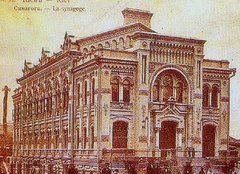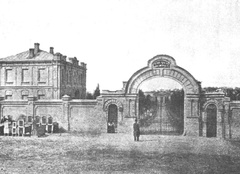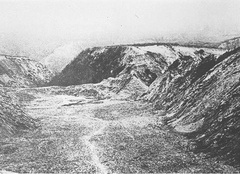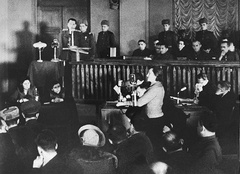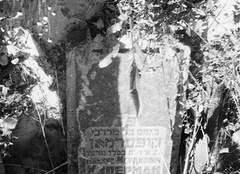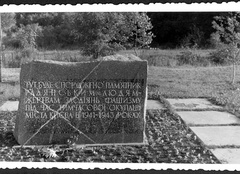Kiew
Pronounced “KEE-ev” (Ukrainian: Київ / Kyiv, Russian: Киев / Kiev, Polish: Kijów, Czech: Kyjev, German: Kiew, Yiddish: קיִעוו / Kyyiv, Hebrew: קייב)
Jewish merchants were first recorded in the city of Kiev, an important trading crossroads between Europe and Asia, in 930 CE. Over the next few centuries, the Jewish community enjoyed periods of relative tolerance that alternated with outbreaks of antisemitic persecution. Jews were banned from living within the city in 1495 and again in 1619. However, the worst violence of the early modern era occurred during the Khmelnytsky Uprising of 1648-1649 when tens of thousands of Jews were murdered across Ukraine.
The Jewish community of Kiev was not re-established until 1793 when the city belonged to the Russian Empire. Land for a Jewish cemetery was acquired in 1798, but restrictions on Jewish residence halted the growth of the community. It was not until 1855, when Nicholas II became Tsar of Russia, that some Jews were allowed to live within the city. The Jewish population grew from about 3,000 in 1863 (3 percent of the total population) to about 30,000 by the end of the century (13 percent of the total population). Most lived in the poorest districts of the city and earned a living as traders, craftsmen or carters who transported goods between cities. Beginning in 1881, Jews in Kiev were subject to “oblavy,” or “hunt attacks,” when police would enter Jewish residences during the night to arrest any Jews found without proper paperwork.
Jewish cultural life blossomed in Kiev despite these circumstances. Four synagogues were built in the city from 1895 to 1909, one of which was financed by wealthy Jewish sugar baron Lazar Brodsky. Brodsky and other philanthropists also contributed to a rich network of Jewish organizations that included schools, libraries and numerous hospitals. However, antisemitic sentiment continued to manifest in violent outbreaks that included an anti-Jewish pogrom in 1905, followed by another antisemitic riot in 1911.
Violence and instability wracked Ukraine during the years of World War I (1914-1918), the Russian Revolution (1917) and the Ukrainian War of Independence (1917-1921). A famine and typhus outbreak in the early 1920s caused further suffering and the Jewish population of Kiev surged as refugees fled to the city. In 1922, Ukraine became a state of the Soviet Union.
By 1926, about 140,000 Jews lived in Ukraine, making up a little less than a third of the city’s total population. For the first two decades of the Soviet regime authorities fostered and encouraged Jewish cultural life and Yiddish-language newspapers and literature thrived. However, support ended around 1939 when Soviet policy changed and all Jewish organizations were banned.
Survivor Nikolay Vaserman was born in Kiev in 1924. He remembered how his formerly Jewish school was “converted to a Russian school” where he had both Jewish and non-Jewish friends. At home Vaserman’s family spoke Yiddish. He recalled how his extended family gathered together to celebrate Passover and other Jewish holidays.
Vaserman was a teenager when World War II began in September 1939. After German troops invaded the Soviet Union in the summer of 1941, Vaserman and his family, along with about 100,000 other Jews, fled farther east to Kazakhstan. On September 29, 1941, any Jews who remained in Kiev were led to a Jewish cemetery near the ravine of Babi Yar. There, members of the Nazi Einsatzgruppen, or mobile killing squads, ordered them to relinquish their clothing and valuables before lining them up and shooting them into the ravine. In total, approximately 100,000 people were murdered at Babi Yar during the Holocaust.
The Jewish community of Kiev—a third of the city’s population—was destroyed.
Kiew: Photographs & Artifacts
-
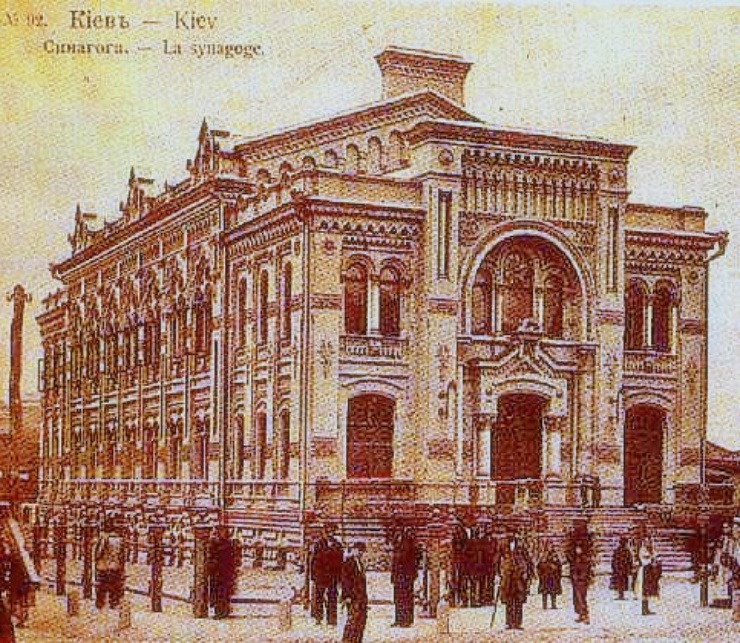 Funded by Jewish philanthropist Lazar Brodsky, the Brodsky Synagogue was completed in 1898. Credit: WIkimedia Commons / Public Domain
Funded by Jewish philanthropist Lazar Brodsky, the Brodsky Synagogue was completed in 1898. Credit: WIkimedia Commons / Public Domain -
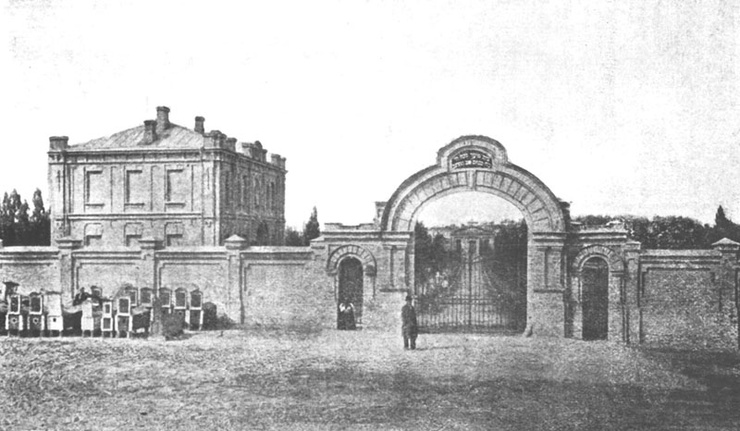 The main entrance to the Lukyanovka Jewish cemetery, ca. 1917. Established in 1894, the cemetery was located near the Babi Yar ravine. Credit: WIkimedia Commons / Public Domain
The main entrance to the Lukyanovka Jewish cemetery, ca. 1917. Established in 1894, the cemetery was located near the Babi Yar ravine. Credit: WIkimedia Commons / Public Domain -
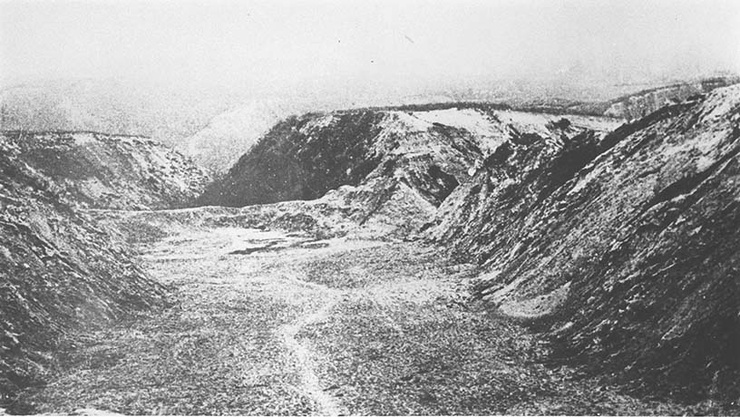 The Babi Yar ravine where more than 33,000 Jews were massacred in September 1941. Credit: Yad Vashem
The Babi Yar ravine where more than 33,000 Jews were massacred in September 1941. Credit: Yad Vashem -
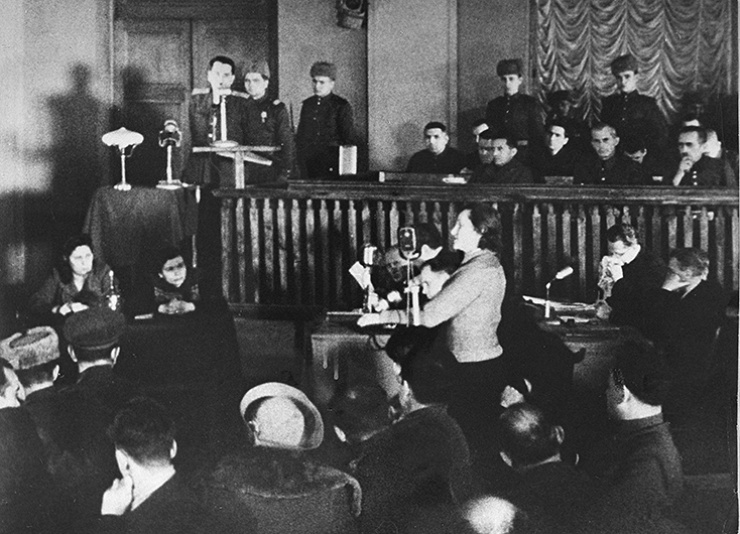 Dina Pronicheva, a Jewish survivor of the Babi Yar massacre, testifies about her experiences during a war crimes trial in Kiev, 24 January 1946. Credit: United States Holocaust Memorial Museum, courtesy of Babi Yar Society
Dina Pronicheva, a Jewish survivor of the Babi Yar massacre, testifies about her experiences during a war crimes trial in Kiev, 24 January 1946. Credit: United States Holocaust Memorial Museum, courtesy of Babi Yar Society -
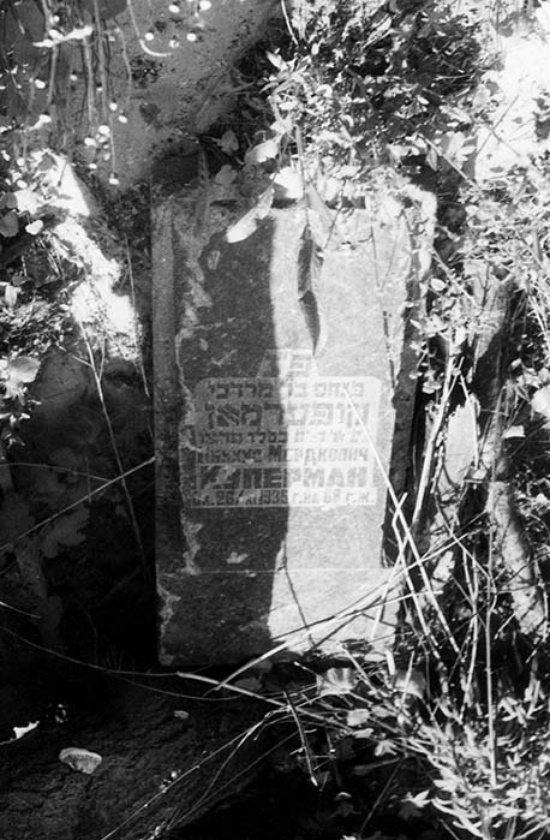 Remnants of gravestones in the former Jewish cemetery of Kiev, 1990. As of 2017 a television center is located at the site. Credit: Yad Vashem
Remnants of gravestones in the former Jewish cemetery of Kiev, 1990. As of 2017 a television center is located at the site. Credit: Yad Vashem -
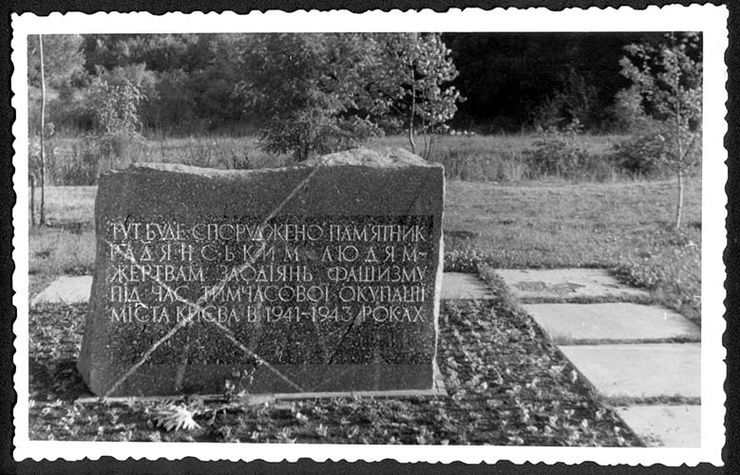 A memorial to the victims of fascism in the Kiev area. Credit: Yad Vashem
A memorial to the victims of fascism in the Kiev area. Credit: Yad Vashem -
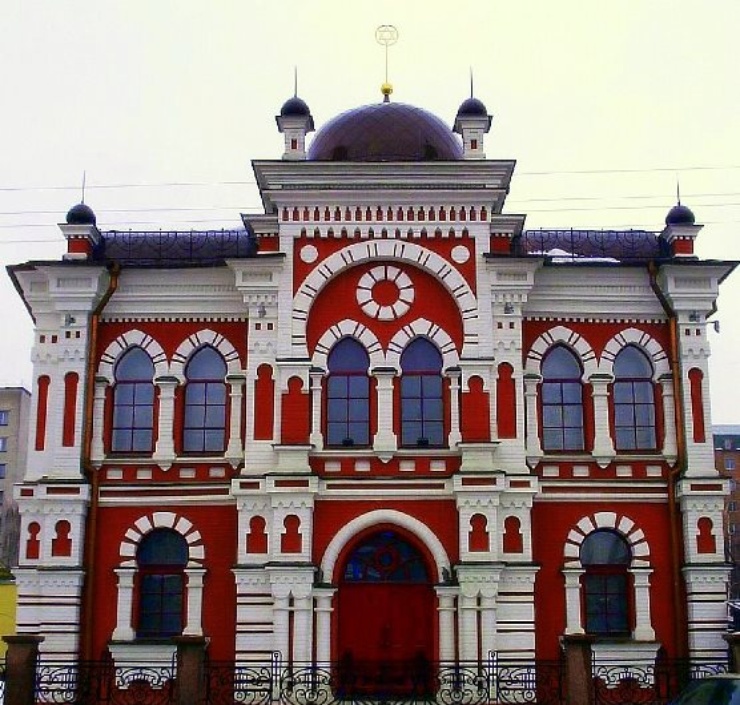 Built in 1895, the Great Choral Synagogue is the oldest in Kiev. Credit: WIkimedia Commons / Public Domain
Built in 1895, the Great Choral Synagogue is the oldest in Kiev. Credit: WIkimedia Commons / Public Domain
Destroyed Communities Memorial Slope
Kiew: Survivors
No one would have been saved if [we] didn’t evacuate.
